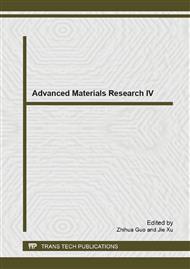p.177
p.182
p.186
p.192
p.201
p.206
p.212
p.217
p.222
Nd:YAG Laser Texturization on Silicon Surface
Abstract:
Monocrystalline silicon texturization will be elaborate in this paper as a new method for texturing silicon surface. Normally, silicon surface will textured by using wet chemical etched. Some of crystalline wafer is ineffective when using conventional methods, because the different crystallographic orientation of regions of diversified consequence. Conventional method which is wet chemical etched always shown not uniform texture. So, the texturization with laser will introduce as a promising method in reducing reflection on silicon surface. This is the reason for conducting this research. Field Emission Scanning Electron Microscopy (FESEM) and digital microscope are performed to evaluate the results. Texturization of monocrystalline silicon surface by using Pulsed Laser Nd:YAG was found to be promising method in terms to avoid chemical texturing etched method. Compared to the conventional texturing method, laser texturization is much more independent on grains crystallographic orientation. Higher homogeneity texture can be reached when using laser Nd:YAG compared with chemical or electrochemical methods. The heat affected area caused by material damages is related with presented method limitation implementation practically. However, one step of chemical etching will be used to remove the damages after laser texturization. The main reason conducted this new methods are to reduce reflectance from bare or polished silicon surface and adapt it into solar cell manufacturing process. This new methods are expected to gives high efficiency solar cells.
Info:
Periodical:
Pages:
201-205
Citation:
Online since:
February 2014
Authors:
Price:
Сopyright:
© 2014 Trans Tech Publications Ltd. All Rights Reserved
Share:
Citation:


